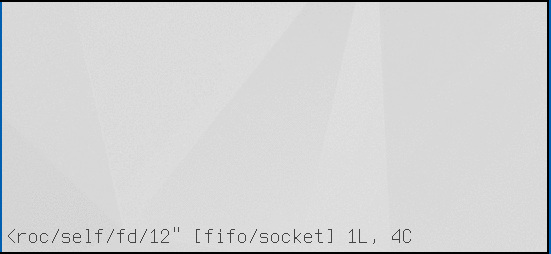66
12
I'm honestly surprised that this hasn't been done already. If you can find an existing thread, by all means mark this as a duplicate or let me know.
Input
Your input is in the form of any positive integer greater than or equal to 1.
Output
You must output the sum of all integers between and including 1 and the number input.
Example
In: 5
1+2+3+4+5 = 15
Out: 15
OEIS A000217 — Triangular numbers: a(n) = binomial(n+1,2) = n(n+1)/2 = 0 + 1 + 2 + ... + n.
Leaderboard
Run the code snippet below to view a leaderboard for this question's answers. (Thanks to programmer5000 and steenbergh for suggesting this, and Martin Ender for creating it.)
var QUESTION_ID=133109,OVERRIDE_USER=69148;function answersUrl(e){return"https://api.stackexchange.com/2.2/questions/"+QUESTION_ID+"/answers?page="+e+"&pagesize=100&order=desc&sort=creation&site=codegolf&filter="+ANSWER_FILTER}function commentUrl(e,s){return"https://api.stackexchange.com/2.2/answers/"+s.join(";")+"/comments?page="+e+"&pagesize=100&order=desc&sort=creation&site=codegolf&filter="+COMMENT_FILTER}function getAnswers(){jQuery.ajax({url:answersUrl(answer_page++),method:"get",dataType:"jsonp",crossDomain:!0,success:function(e){answers.push.apply(answers,e.items),answers_hash=[],answer_ids=[],e.items.forEach(function(e){e.comments=[];var s=+e.share_link.match(/\d+/);answer_ids.push(s),answers_hash[s]=e}),e.has_more||(more_answers=!1),comment_page=1,getComments()}})}function getComments(){jQuery.ajax({url:commentUrl(comment_page++,answer_ids),method:"get",dataType:"jsonp",crossDomain:!0,success:function(e){e.items.forEach(function(e){e.owner.user_id===OVERRIDE_USER&&answers_hash[e.post_id].comments.push(e)}),e.has_more?getComments():more_answers?getAnswers():process()}})}function getAuthorName(e){return e.owner.display_name}function process(){var e=[];answers.forEach(function(s){var r=s.body;s.comments.forEach(function(e){OVERRIDE_REG.test(e.body)&&(r="<h1>"+e.body.replace(OVERRIDE_REG,"")+"</h1>")});var a=r.match(SCORE_REG);a&&e.push({user:getAuthorName(s),size:+a[2],language:a[1],link:s.share_link})}),e.sort(function(e,s){var r=e.size,a=s.size;return r-a});var s={},r=1,a=null,n=1;e.forEach(function(e){e.size!=a&&(n=r),a=e.size,++r;var t=jQuery("#answer-template").html();t=t.replace("{{PLACE}}",n+".").replace("{{NAME}}",e.user).replace("{{LANGUAGE}}",e.language).replace("{{SIZE}}",e.size).replace("{{LINK}}",e.link),t=jQuery(t),jQuery("#answers").append(t);var o=e.language;/<a/.test(o)&&(o=jQuery(o).text()),s[o]=s[o]||{lang:e.language,user:e.user,size:e.size,link:e.link}});var t=[];for(var o in s)s.hasOwnProperty(o)&&t.push(s[o]);t.sort(function(e,s){return e.lang>s.lang?1:e.lang<s.lang?-1:0});for(var c=0;c<t.length;++c){var i=jQuery("#language-template").html(),o=t[c];i=i.replace("{{LANGUAGE}}",o.lang).replace("{{NAME}}",o.user).replace("{{SIZE}}",o.size).replace("{{LINK}}",o.link),i=jQuery(i),jQuery("#languages").append(i)}}var ANSWER_FILTER="!t)IWYnsLAZle2tQ3KqrVveCRJfxcRLe",COMMENT_FILTER="!)Q2B_A2kjfAiU78X(md6BoYk",answers=[],answers_hash,answer_ids,answer_page=1,more_answers=!0,comment_page;getAnswers();var SCORE_REG=/<h\d>\s*([^\n,]*[^\s,]),.*?(\d+)(?=[^\n\d<>]*(?:<(?:s>[^\n<>]*<\/s>|[^\n<>]+>)[^\n\d<>]*)*<\/h\d>)/,OVERRIDE_REG=/^Override\s*header:\s*/i;body{text-align:left!important}#answer-list,#language-list{padding:10px;width:290px;float:left}table thead{font-weight:700}table td{padding:5px} /* font fix */ body {font-family: Arial,"Helvetica Neue",Helvetica,sans-serif;} /* #language-list x-pos fix */ #answer-list {margin-right: 200px;}<script src="https://ajax.googleapis.com/ajax/libs/jquery/2.1.1/jquery.min.js"></script> <link rel="stylesheet" type="text/css" href="//cdn.sstatic.net/codegolf/all.css?v=83c949450c8b"> <div id="answer-list"> <h2>Leaderboard</h2> <table class="answer-list"> <thead> <tr><td></td><td>Author</td><td>Language</td><td>Size</td></tr></thead> <tbody id="answers"> </tbody> </table> </div><div id="language-list"> <h2>Winners by Language</h2> <table class="language-list"> <thead> <tr><td>Language</td><td>User</td><td>Score</td></tr></thead> <tbody id="languages"> </tbody> </table> </div><table style="display: none"> <tbody id="answer-template"> <tr><td>{{PLACE}}</td><td>{{NAME}}</td><td>{{LANGUAGE}}</td><td>{{SIZE}}</td><td><a href="{{LINK}}">Link</a></td></tr></tbody> </table> <table style="display: none"> <tbody id="language-template"> <tr><td>{{LANGUAGE}}</td><td>{{NAME}}</td><td>{{SIZE}}</td><td><a href="{{LINK}}">Link</a></td></tr></tbody> </table>











5Closely related – FryAmTheEggman – 2017-07-18T20:36:02.960
@FryAmTheEggman Sorry - had a bit of a brain fart there. I see what you mean. – GarethPW – 2017-07-18T20:45:22.930
I expected a bunch of very short answers (10 or 15 bytes) all either using the summation formula or a language summation feature. But DANG! A bunch of them at 2 bytes!? Is this now the "golf of code golfs," or have there been any others with 2-byte solutions (or what about 1 byte)? – Aaron – 2017-07-18T21:34:56.107
2@Aaron you got ninja'd by Husk, which was just posted with a 1 byte solution – Skidsdev – 2017-07-18T21:35:59.053
@Mayube Wow.... I originally thought this was a silly question, "It's just going to be a bunch of different languages typing out the summation formula, or if it's built in then doing
sum(x); why would someone bother writing such a silly so-called golf?" But now I don't know what to say. I have been schooled. I will +1 this question after all. – Aaron – 2017-07-18T23:12:19.163@steenbergh Working on it right now. – GarethPW – 2017-07-19T10:57:46.590
7I suggest a stack snippet. – programmer5000 – 2017-07-19T11:42:33.153
@programmer5000, steenbergh I've added the leaderboard snippet. Thanks for your suggestions! – GarethPW – 2017-07-19T19:30:02.793
1
Related: http://www.minecraftforum.net/forums/off-topic/computer-science-and-technology/hardware-software-support/498403-code-golf-sum-of-integers-0-to-n
– Jerry Jeremiah – 2017-07-27T12:20:37.017@JerryJeremiah how? – FantaC – 2017-12-11T15:59:33.027